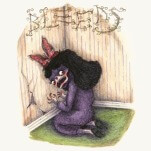Eat This Now: October
I wish it could be October all year. Food’s not the only reason, but it’s a big one. So I was kind of dreading the seasonal food writeup because oh my God where do you even start? Fall foods are some of my favorites and it is high season for pears, persimmons, pomegranates, pumpkins, almonds, walnuts, chanterelles, pink pepper, quinces and medlars, grapes, baby kale and spinach – it’s almost as if the planet is saying “Here. Eat up, because the next few months get complicated. Sparse-style complicated.”
Farmer’s markets are dizzying in October. Trees withdraw their chloroplasts and go dormant with a big showy diva phyto-pyrotechnics display (there’s a liquidambar in my neighborhood that turns red, gold, orange, purple and bright yellow all at once). Tomatoes are still producing, and will until there’s a frost, but watery summery stuff is slowing down, keeling over, and making way for energy-dense produce, plants that seem intended to see people through the lean season. All of which is fascinating and poetic and stuff.
But all I really want to talk about is apples.
Malus domestica. The apple is one of the most broadly cultivated fruits on Earth (probably second only to the grape) and there are thousands of known varieties and an untold number of unknown ones. Yet if you are under the age of about 60 and are not a devoted farmers’ market shopper or someone who grew up on a farm, it’s very likely that you’ve never truly tasted one. At the height of apple diversity in this country we had about 2,500 cultivars—and that number represents less than a tenth of the apple’s genome.
Let me say that again. Apples have twice as many genes as you do, and yet every apple you’ve ever bought in a supermarket, despite an appearance of diversity, came from some combination of six—that’s six—parent varietals.
-

-

-

-

-

-

-

-

-

-

-

-

-

-

-

-

-

-

-

-

-

-

-

-

-

-

-

-

-

-

-

-

-

-

-

-

-

-

-

-








































